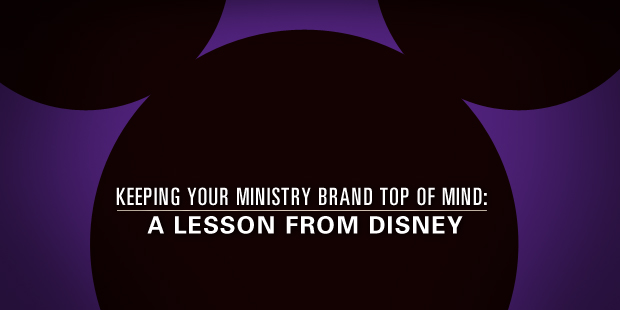
Keeping Your Ministry Brand Top of Mind: A Lesson from Disney
Though it was founded in 2006 (which makes it older than Twitter), BuzzFeed stormed onto the social media scene in 2012, more than doubling its 2011 traffic (per Alexa).
The format is perfect for the way audiences consume and share media today. The content is easy to consume, relevant, entertaining and frequent, as the site posts dozens of times a day. Brands like HBO and Velveeta have even joined in, co-creating content with BuzzFeed. It’s a publishing model that requires lots of staffers and community contributors to keep the content fire hose pumping.
So it was quite a surprise to see that Disney has launched its own BuzzFeed-like site. Entitled “Oh My Disney” (OMD), the site features articles with Disney imagery, GIFs and other short-form Disney-related editorial built specifically to be easily consumed, enjoyed and quickly shared. Posts like “15 More Reminders That You’re Great Today” and “You Know You’re a 90′s Kid When” are organized into five categories: Awww; Oh, Snap!; Retro; Silly; and Whoa.
The page is updated quite consistently, anywhere from two to eight times a day (even if the content isn’t necessarily timely). So how is Disney doing it?
A HISTORY OF SOCIAL MEDIA SUCCESS
If any brand were going to dive headfirst into publishing, Disney might be the one best suited to it. Far and away its largest and most successful platform is Facebook, where the Disney page boasts more than 42 million fans. The pages for Pixar Studios and Walt Disney Studios aren’t shabby either, having 12.5 million fans and 6.4 million fans, respectively, and the OMD Facebook page has 11,000 fans after only a few weeks of existence. Oh My Disney is also on Twitter and Tumblr.
So the foundation is there for Disney to create its own publishing channel, where a post can expand beyond the confines of a 140-character tweet or a single-image Facebook post. But what makes this possible for Disney, and difficult (though not impossible) for most other brands, lies much deeper than social media.
A HISTORY OF STORYTELLING
Having movies and characters at its core and countless physical and digital extensions, Disney has endeared itself to many through its heartfelt storytelling. Disney has a wealth of original and beloved content and characters with messages that are relevant no matter what decade you were born in. Parents watch Disney films with their children, just as they watched them with their parents when they were their children’s age. All this content gives Disney vast amounts of ammunition for OMD. They’re not creating new content as much as curating existing content.
This inherent storytelling is what makes social media and content marketing such a fruitful endeavor for entertainment-based brands. Imagery and quotations resonate with audiences forever. I still crack a smile every time the Forrest Gump Facebook page posts an update, referring to a movie that was made nearly 20 years ago (has it really been that long?).
FINDING YOUR AUDIENCE AND DELIVERING CONTENT
Another reason OMD can work for Disney is that the brand has done a great job of finding its audience. There is certainly no shortage of social media channels, but Disney carefully chooses where it will publish content and plans appropriately. Disney isn’t just creating articles on OMD and cross-posting to Twitter, Facebook, Pinterest and Tumblr. Disney creates content specifically for each channel. Granted, the content is often very similar (photo and GIF heavy), but that creates familiarity and a unified social media voice. The key is that Disney finds its audience on the appropriate channels and uses those channels to create instead of solely promoting.
WHAT DOES THIS MEAN FOR YOUR BRAND?
As a content agency, we’re obviously big fans of creating an owned channel, like OMD. But we warn brands about biting off more than they can chew. Disney has made such a commitment to content that it’s dedicated a team (albeit small) to OMD, and that’s really the only way to pull off a channel like this.
But that doesn’t mean that brands should ignore the trail Disney has blazed. Like the first brands to create custom-published magazines, Disney has decided to move beyond native advertising and own its content channels. Even though it is an established brand that’s been around for decades, Disney remains at the forefront of brand storytelling.
It’s a bold move. Do you think this will pan out for Disney? Will more brands follow?
Read more from Jon here.

Tags: Attention, Aware, Brand, Jon Thomas, Social Media













